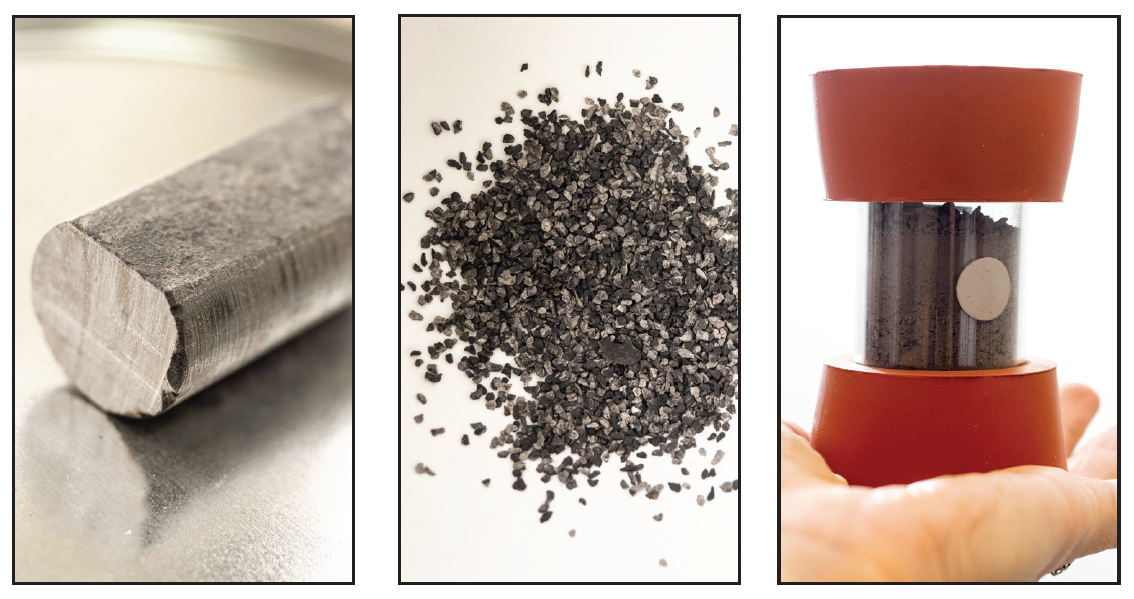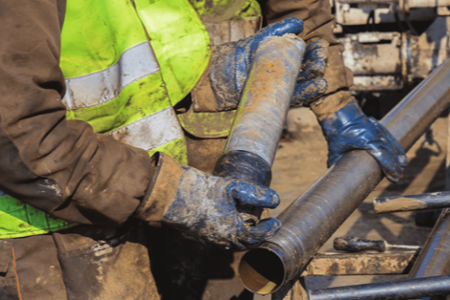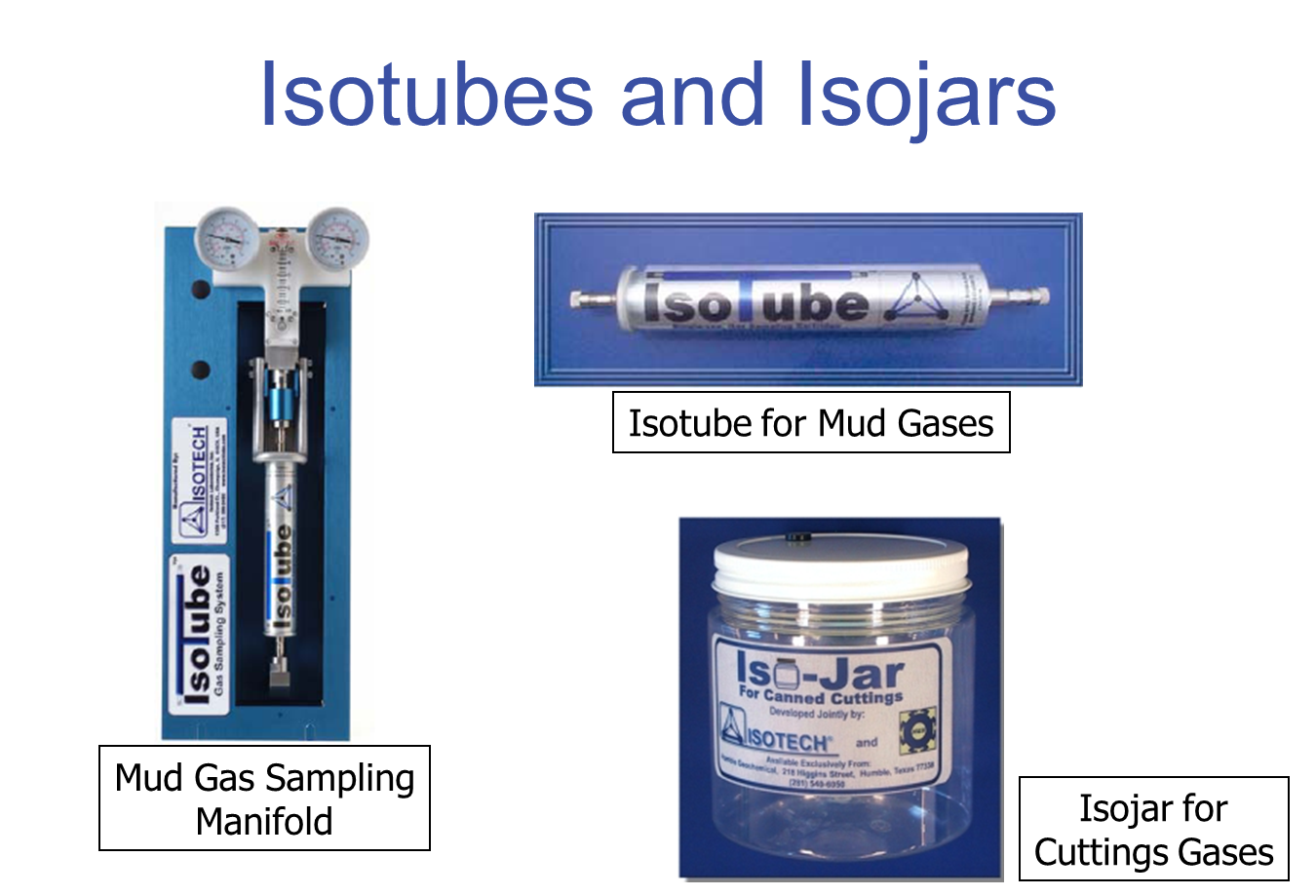Application of Triple Quad GC-MS/MS (QQQ) to Enhance Understanding of Petroleum Systems
June 10, 2020 | 5 Minutes Read

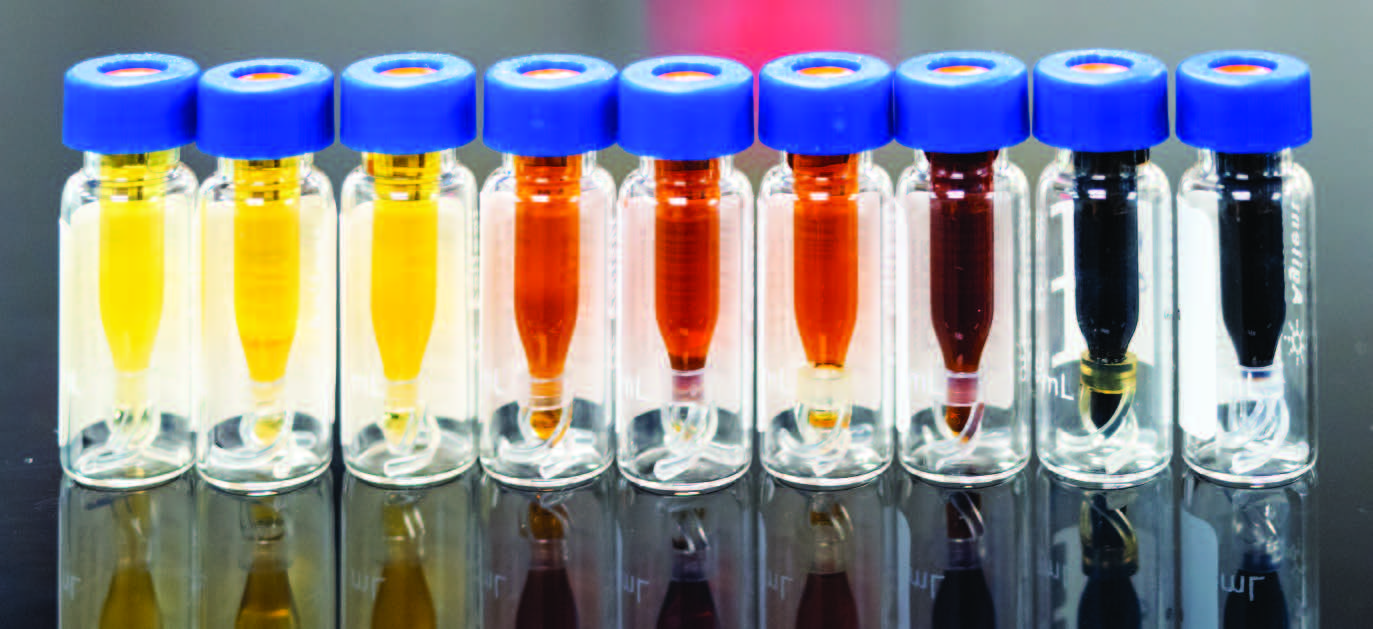
Introduction
For decades, the bulk of geochemical characterization and
source discrimination of produced oils has relied upon analysis of traditional biomarkers via Gas Chromatography (GC) and Gas Chromatography - Mass Spectrometry (GC-MS). There is widespread literature on the utility of the C7 parameters, steranes, terpanes, etc to understand source relationships and environments of produced oils. However, these traditional methods are less accurate with increasing maturity, as GC data becomes increasingly non-unique and biomarker peaks are lost and so have a limited utility for understanding petroleum systems that encompass a range of maturity levels. This is particularly true for light oils associated with many unconventional systems (e.g. Permian, Anadarko Basins, etc). Gas Chromatography-Mass Spectrometry/Mass Spectrometry (GC-MS/MS) opens up the ability to assess fluids across a range of thermal maturities. GeoMark’s procedure requires minimal sample preparation and allows for the collection of n-alkanes, isoprenoids and traditional biomarkers as well as non-traditional biomarkers (e.g. alkyl aromatics, diamondoids, carotenoids) maximizing the data available to understand fluid histories of petroleum systems. Although, often promoted as a tool for understanding light oils/condensates, GC-MS/MS is equally valid - indeed, potentially more so - for assessing lower maturity fluids and even rock extracts.
Analytical Setup
Utilizing a proprietary method and an Agilent triple quadrupole mass spectrometer (QQQ) and 7890 GC, GeoMark Research conducts quantitative analyses of whole oils/extracts for a variety of terpane/sterane biomarkers as well as diamondoids, carotenoids, and a series of alkyl aromatics, all in a single run. The first quadrupole (Q1) mass analyzer filters out the molecular ions. These are dissociated in a collision chamber (Q2) and the second mass filter (Q3) separates out the characteristic product ions. Picogram detection limits are routinely possible and the method works on all but the most mature oils and condensates (>1.3 Ro). GeoMark’s simplified yet robust approach to sample preparation and execution is to “Dilute & Shoot” and allows for maximum preservation of light end hydrocarbons and sample integrity.

Thermal Maturity Determination (VREQ)
Thermally stable hydrocarbons including: diamondoids, alkyl benzenes and polyaromatic hydrocarbons are the primary constituents in higher maturity fluids. Collection of the alkyl aromatic compounds via QQQ analysis allows thermal maturity to be calculated against a GeoMark propriety conversion system providing results as a vitrinite reflectance equivalent, noted as VREQ. Maturity can be determined on both produced oils and core extracted hydrocarbons across the entire maturity range (0.6 to 1.3 Ro). This quantified value can be combined with other QQQ parameters such as diamondoids, steranes, napthalene contents, etc and the color of the fluid itself to assess mixing, alteration and source variations across sample sets.
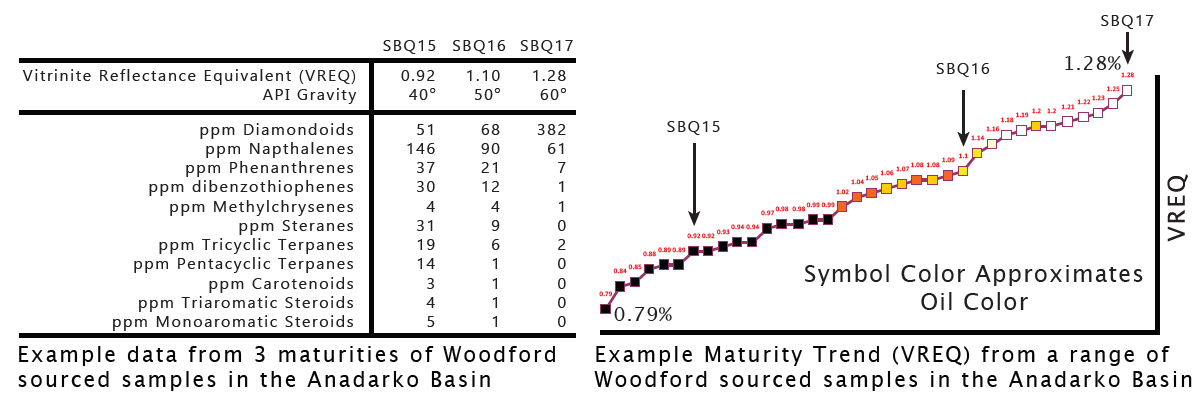
Source Character and Paleoenvironment
The method discussed in this bulletin reports data for 21 compound classes and more than 250 individual compounds. The overall percent composition of the hydrocarbon is calculated for all of the major compound groups (diamondoids, napthalenes, etc) along with thesaturate/aromatic ratio (SAQ) and the nitrogen, sulfur and oxygen (NSOq) contents. This wealth of data, covering compound classes fromC9 through C40, allows a much more in-depth assessment and comparison of hydrocarbon samples than any one other technique.
GeoMark Research has invested extensive research in validating the application of QQQ analysis to interpret the age and environment of oils from known source rocks across the world and geological timescale (Summons et al., 2019).
The table and cross-plots below are for a set of produced oil samples from the Anadarko Basin. The samples range in thermal maturity from 0.84 to 1.19 %VREQ. However, there is a very clear disconnect between
the calculated maturity and the compound abundances, particularly diamondoid content. This variation is a result of cracking, mixing and differing source environments across the sample set.
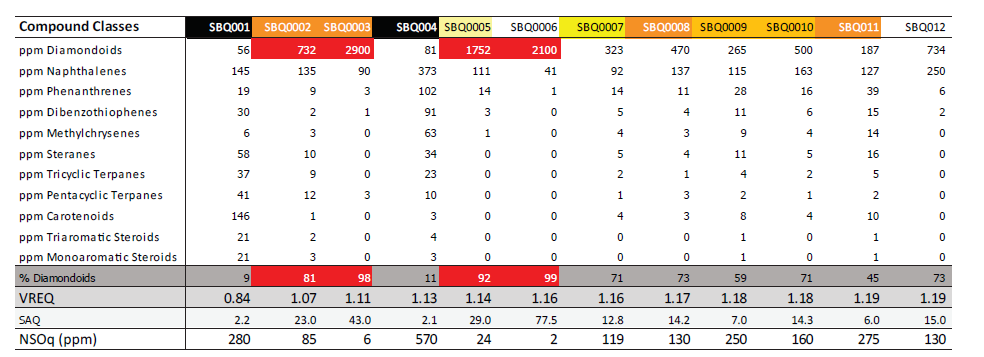
Table (Above) - GC-MS/MS (QQQ) summary table for 12 oils from the Anadarko Basin

Figure (Above) - Bivariate cross-plots of a selection of the major compound classes
Carotenoids are ubiquitous pigments present in a wide range of bacteria, eukaroytes and archaea. The presence of specific - or groupings of - carotenoid compounds are good indicators of depositional environment, particularly if photic zone euxinia (PZE) was present during source rock deposition. The C40 carotenoid-derived biomarkers therefore offer potential to understand paleoenvironment and in some cases the geologic age of produced oils.

Table (Above) - A selection of the commonly encountered C40 Carotenoid peaks and the proposed paleoenvironmental significance and age range from GeoMark Research's ongoing work on these compounds (Summons et al., 2019)
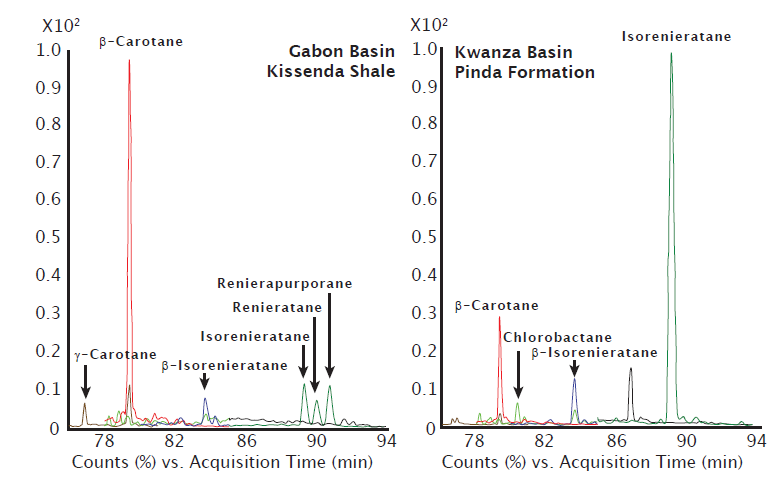
The chromatograms above are a comparison of carotenoids extracted from Cretaceous West African pre-salt source rock environments (Kissenda Shale) compared with post-salt marine source rocks (Pinda Formation). The different environments are easily identified in the C40 distribubution.
Conclusions
GC-MS/MS (QQQ) is a powerful tool for understanding source, history and thermal maturity of produced oils and extracts. With a single analysis, quantified results are obtained for a range of parameters that cover traditional interpretation applications as well as opening doors to new learnings. This technique is relevant for exploration settings that need to integrate data across a range of maturities as well as detailed production analysis of high thermal maturity samples that otherwise lack unique identifiers. QQQ analysis offers significant benefits to sampling conditions that were previously limited.
Summons, R.E., Zumberge, J.E., Rocher, D. and Barrie, C.D. 2019. Carotenoid-derived Biomarkers as Geochemical Tools for Petroleum Exploration and Paleoreconstruction: GeoMark Carotenoid Study Report
